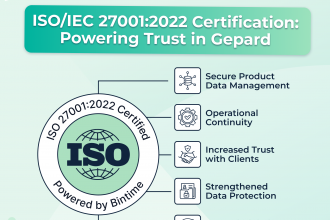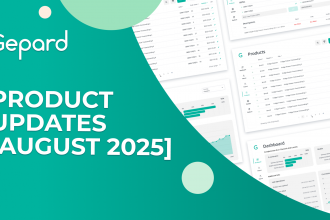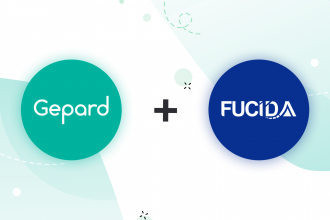Gepard PIM June 2025 Product Updates: Smarter Content, Faster Pipelines
Gepard’s product team has spent the past two weeks on a dual mission: push AI deeper into the platform and remove every friction point between product data and live-commerce channels. The result is the most ambitious release cycle since Gepard’s launch – one that combines multilingual generative content, one-click product scraping, a visual workflow builder, and dozens of smaller stability tweaks that add up to big time savings. Below is a guided tour of the highlights, why they matter, and what’s coming next.
1. AI Content Generation Goes Multilingual – Without the Chaos
Last year’s AI Content Generator impressed users by turning structured attributes into ready-to-publish copy. The new version keeps that strength but layers on three upgrades that solve the “content chaos” problem at global brands:
- Single-pass multilingual output. Instead of running the model separately for each locale, Gepard first creates an English “source of truth,” then machine-translates that text into any number of additional languages. The approach preserves one core meaning and prevents the divergence that creeps in when each market writes copy in isolation.
- Granular block control. Title, short description, and long description are now separate regeneration targets. Editors can tweak the headline while leaving the long copy intact, or vice-versa.
- Voice & nuance on demand. A drop-down lets teams choose a persuasive, professional, or conversational tone. A free-form instruction field adds micro-nuance (“focus on graphics,” “emphasize sustainability”) without rewriting prompts.
Together, these changes cut average description creation time from days to minutes while safeguarding brand consistency – especially valuable for multiregional retailers who push hundreds of SKUs a week.
2. From Any URL to Structured Product in Seconds
The new Extract Agent answers a perennial onboarding gripe: “My supplier only has a website – do I really have to copy everything by hand?” No more. Paste a product link and the agent spins up a headless browser that:
- Scrolls the page to trigger lazy-loaded content.
- Captures a full-fidelity PDF snapshot plus raw HTML and images.
- Pipes the data through Gepard’s existing extraction flow, which now detects brand, category, price, and key features with impressive accuracy.
3. Stability & Performance: The Quiet Wins
Under the hood, Gepard trimmed fat and tightened screws:
- Validation cap reduced from 100 MB to 20 MB. Large technical PDFs no longer choke the queue, and upload timeouts have dropped sharply.
- Search indices slimmed from 70 locales to 14. The team consolidated overlapping linguistic variants to boost query speed and slash infrastructure costs.
- Export speed tripled for multi-locale feeds. Faster hand-offs to marketplaces translate to sooner “in-stock” visibility and fewer cart abandonment emails.
These may not make flashy release notes, but they keep the platform responsive during peak holiday pushes.
4. Front-End Quality-of-Life: Small Clicks, Big Impact
Power users will spot a handful of interface niceties that remove daily irritants:
- Guided tours. First-time visitors now get a step-by-step overlay; veterans can dismiss it or reopen on demand.
- Server-side autocomplete. ID-based searches run lightning-fast even on eight-digit catalogs.
- No more “self-parent” loops. The entity you’re editing no longer shows up in its own parent drop-down, preventing accidental taxonomy recursion.
- Inline attribute creation during CSV/Excel import. Missing fields can be added on the fly instead of forcing a round-trip to settings.
Each tweak shaves seconds off repetitive tasks – and seconds compound quickly when you manage 200 K+ SKUs.
5. Visual Pipeline Builder (Alpha): Data Flows You Can Draw
The alpha-stage Visual Pipeline Builder turns those definitions into drag-and-drop diagrams:
- Node quick-actions let you edit global or node-specific settings without diving into code.
- Catalogue nodes auto-populate when you add a new target market.
- Local auto-save prevents work loss; an upcoming auto-layout will keep sprawling trees readable.
Although early, the builder hints at a future where non-technical category managers assemble sophisticated ETL flows in minutes.
6. Client Impact & KPIs: Proof Beyond the Hype
Gepard isn’t short on logos, but the real success metric is measurable client gain. Recent pilots show:
- AI mapping accuracy at 60-80 %. Less manual attribute mapping accelerates go-live for retailers like ActiVac and Stiebel Eltron.
- April EU energy-label compliance delivered on schedule, saving clients a regulatory scramble.
- 70 % of team time spent on new feature work versus meetings or blockers—evidence of disciplined execution.
7. Roadmap: What’s Coming Next
Gepard plans to double down on three themes:
- AI everywhere. Expect locale coverage to expand and an Enrichment Agent node to join the Pipeline Builder, letting AI fill data gaps mid-flow.
- Deeper media scraping. High-resolution gallery extraction and automatic background sanitization aim to make manual image uploads obsolete.
- Performance tuning & backlog burn-down. With core features in place, the team will funnel more cycles into speed optimization and long-tail support tickets.
Final Thoughts
In an overcrowded PIM market, innovation often means piling on features that look good in sales decks but gather dust in production. Gepard’s 2025 updates feel different: they attack boring, time-eating tasks – writing multilingual copy, scraping supplier sites, building data flows – while keeping an eye on speed and stability. The result is a leaner, smarter platform that helps e-commerce teams move products from supplier to storefront with record velocity and fewer headaches. If your current PIM still treats AI as a bolt-on widget or makes you wait for overnight batches, Gepard’s June release is a compelling reason to revisit the field.





